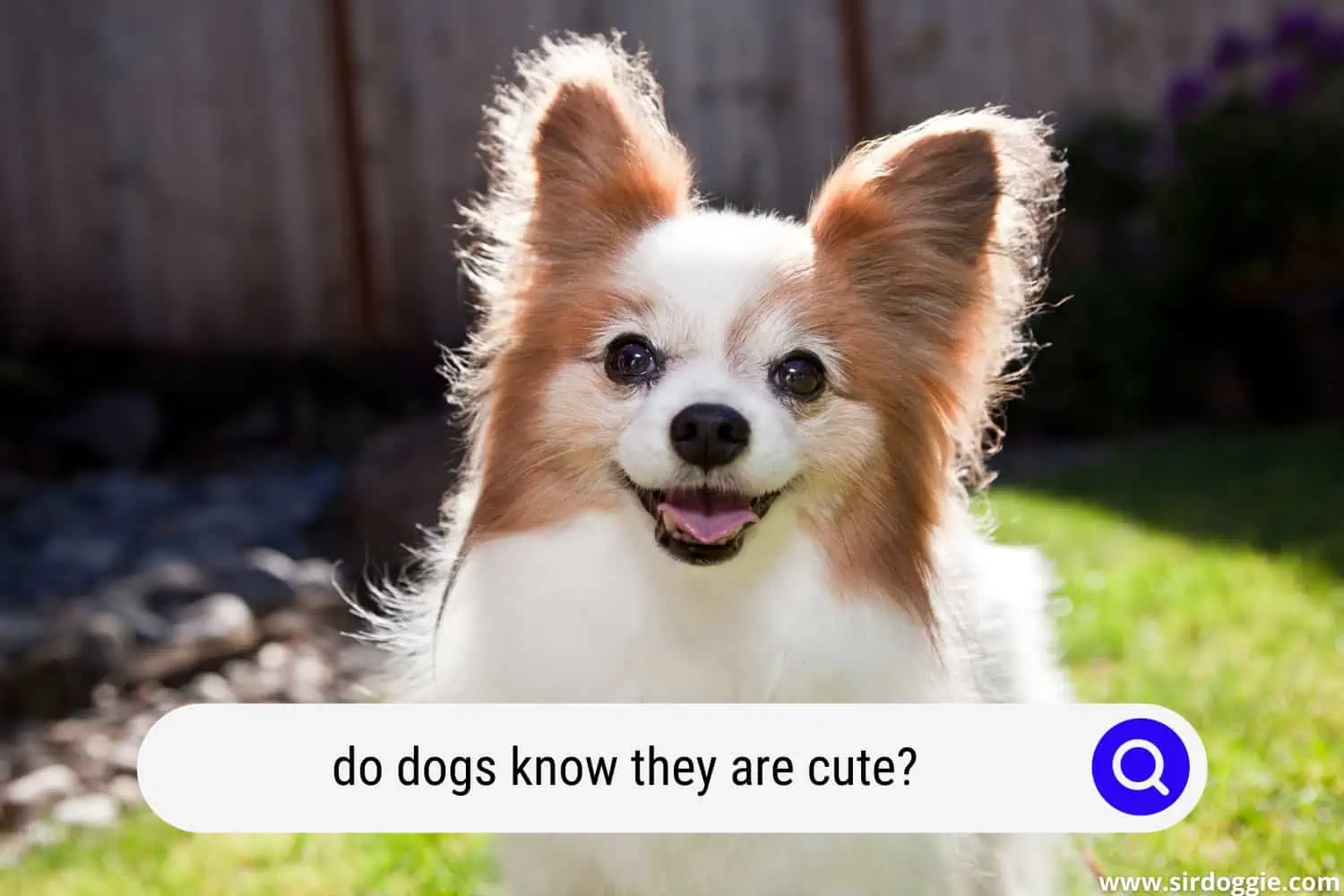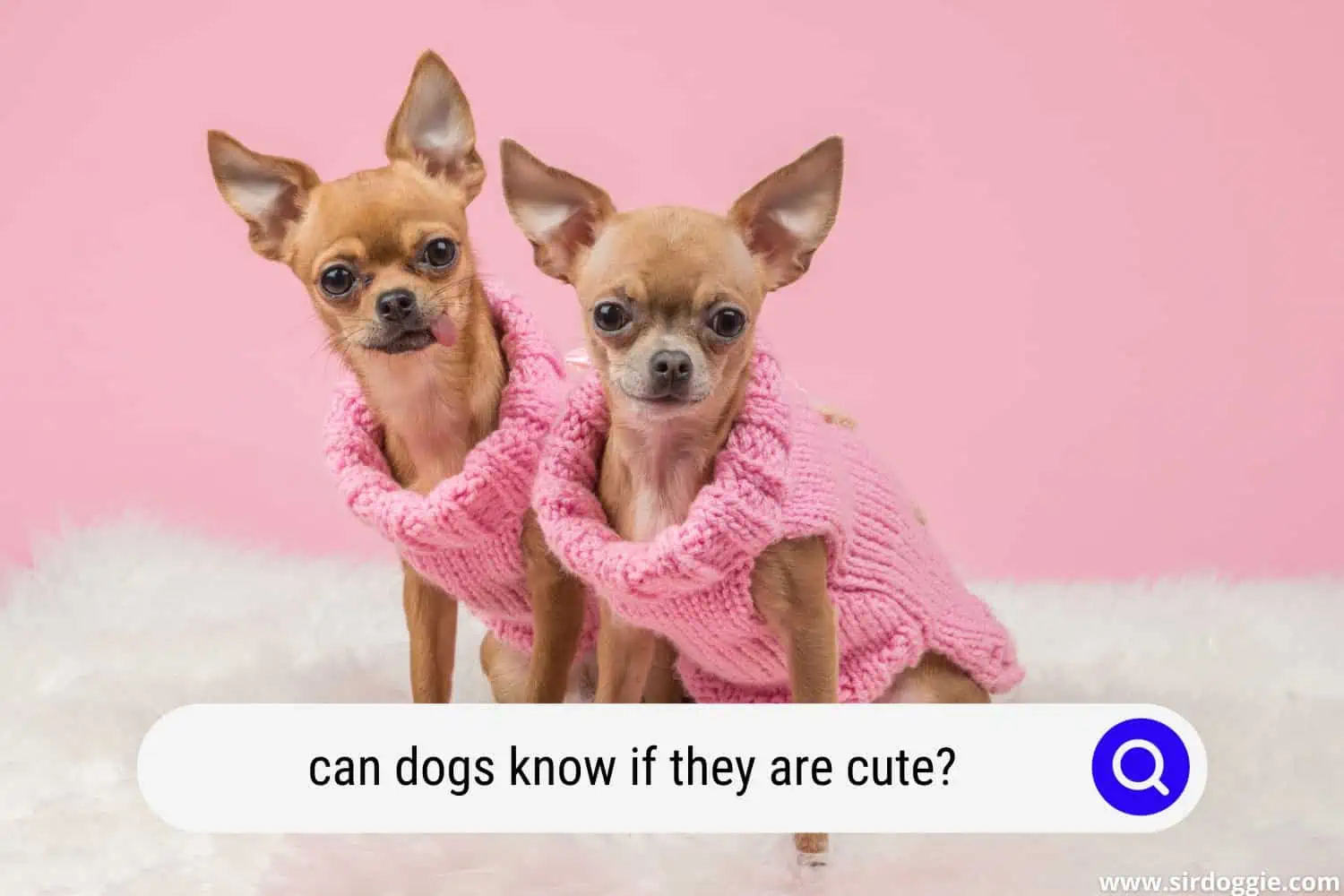Do Dogs Know They Are Cute? Read This First!
The majority of dog owners will agree that their dog’s expressions and actions are cute. They make adorable facial expressions, request affection, and engage in behaviors that amplify their “cute” factor. Do dogs know they are cute? Do they learn to be cute? Or is it just innate, instinctual behavior?

Humans think dogs are cute but do dogs know they are cute? Your dog does not know that they are cute. We often reflect human characteristics, thoughts, and emotions onto our pets, giving ourselves the impression that our dogs act “cute” on purpose. When we have a close relationship with our canine companions, they learn what behaviors make us happy and subsequently exhibit those behaviors regularly. When we are content and happy, they feel satisfied and happy, so dogs quickly learn how to act to make us feel that way.
Your dog may not know or care how they look, but they do like to feel their best. When dogs are healthy and feel loved, they will have good energy, feel happy and playful, and want to spend time with us. The behaviors we attribute to being cute do have meaning. Because dogs can’t speak our language, they communicate with us through body language.
If your dog doesn’t know they’re cute, what do they know?
We spend a lot of time with our dogs, and many owners swear that their dogs understand them. In a way, they’re right! Dogs look and listen for cues in our behavior beyond the words coming out of our mouths. Here are some things your dog really does know about you:
- They sense your emotions
When you are sad or upset, your dog senses that something is wrong and naturally wants to provide you with comfort.
- You’re unfair
Dogs notice when they aren’t getting a normal amount of attention and become anxious.
- You have other priorities
When you have a new baby or get another pet, your dog can become depressed as they see your priorities shift.
- When you’re mad
Our dogs want to please us, and they know when we’re mad at them.
- When you’re afraid
If you are exhibiting fear, your dog knows it. Depending on your dog, this can lead to him engaging in protective mode to save you or him also becoming afraid and anxious.
What do your dog’s cute behaviors really mean?
Let’s look at some cute canine attributes and behaviors and what your dog is really saying when they exhibit them.
The dog smile
If you’re a dog owner, you know what this looks like. Your dog pulls the corners of his mouth back and shows just enough teeth to be sweet and not scary. Are they really smiling at you, or does this expression mean something else?
Historically, wild canine species like wolves and coyotes use this “smiling” facial expression to communicate submission to other pack members. Dominant members of the pack interpret it as a submission from lower-ranking members and assume their role as alpha.
Domestic dog species interpret the “smile” the same way. When your dog is smiling at you, what he’s saying is that he accepts your position as his leader and that he is a lower-ranking member of the family (his pack).
Many pet owners discount this explanation and insist their dog is really smiling on purpose. They’re right in a way. When our dogs smile, we often reward them with petting, treats, or attention. They like this and learn that their facial expression gets them rewarded, so they learn to do it more often.
The head tilt
It’s undeniable that your dog tilting his head to the side as if he’s asking a question is cute. There are several reasons why your dog moves his head to the side.
One is to see better. Your dog’s eyes are set on the side of his head, so it’s difficult for him to see things directly in front of his face clearly. Angling his head helps him get a better view.
Dogs also tilt their heads to get a better look at you. Because they aren’t equipped with verbal language, dogs regularly assess your facial expressions, eye movement, tone of voice, body language, and inflection to determine what you’re communicating to them. To do this, they must see your face clearly, and many dogs have a long muzzle obstructing their line of vision. To get a better idea of how your dog sees your face, place your fist in front of your nose and look around. You will find that you have to tilt your head to see objects directly in front of your face.
Your dog also tilts his head to allow him to hear better. The ear canal of a dog is engineered differently than a human ear as they have flaps that partially block the ear canal and block sound transmission. To compensate for this, dogs perk up their ears and tilt their heads to hear sound accurately.
As with any behavior, if you positively reinforce the head tilt on your dog, you will find him doing it more often as he is seeking the reward.
Puppy dog eyes
Unlike other cute behaviors, puppy dog eyes are something dogs are born with, but research indicates that dogs make their eyes appear larger and more attractive by raising their eyebrows. Humans have a natural preference for dogs with large, childlike eyes, and dogs with “puppy eyes” are more likely to be selected as pets. We may have selectively bred this trait over time to have more attractive dogs.

Related Questions
Do dogs know they’re loved?
Yes! Your dog knows that you love him and feels just as bonded to you as you do to him.
Can your dog apologize to you?
Your dog senses when you are mad and knows they have done something wrong because of your reaction. They will often exhibit “puppy dog eyes” and floppy ears to say “I’m sorry.” After this, they may pay your leg or rub against you to gain your forgiveness.

Family Dog Expert Author
Hi there! I’m Stuart, a devoted dog lover and family dog expert with over a decade of experience working with our furry companions. My passion for dogs drives me to share my knowledge and expertise, helping families build strong, loving bonds with their four-legged friends. When I’m not writing for SirDoggie, you’ll find me hiking, playing with my beautiful dog, or studying music.